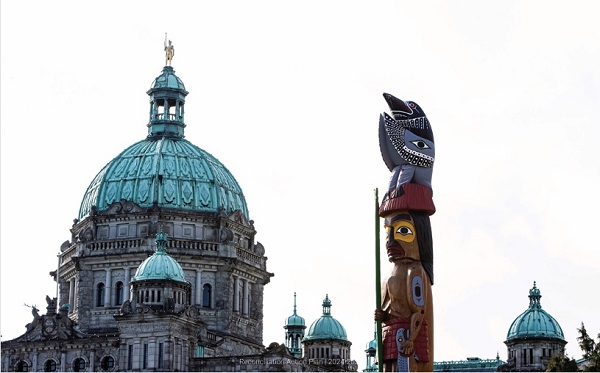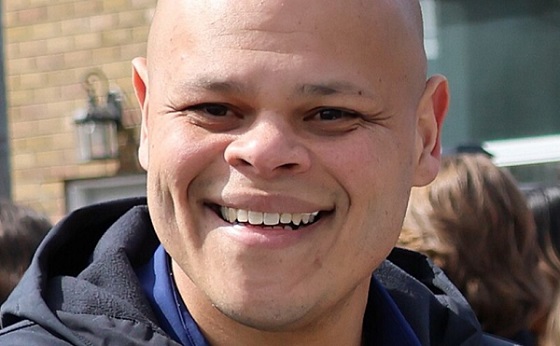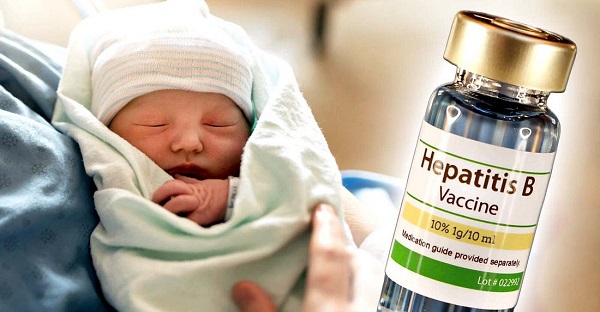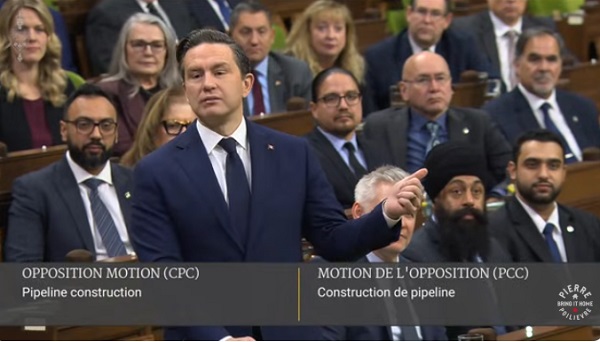Indigenous
Putting government mismanagement of Indigenous affairs in the rear-view mirror

From the Macdonald-Laurier Institute (MLI)
By Ken Coates for Inside Policy
The failures of governance on Indigenous affairs represents an unhappy situation where the problem is, simultaneously, too much government and too little governance
In an era of a mounting number of interconnected complex and difficult problems, one feels sorry for the politicians and civil servants attempting to produce policies, programs, and funding that will make real and sustained progress. We are often confronted with the frightening realization that government, as it is currently structured and directed, is simply not up to the challenges of the 21st century. This is certainly the case with Indigenous affairs in Canada, where the federal government struggles to find the right path forward.
The socio-economic data is clear. Indigenous peoples lag well behind the non-Indigenous population on almost all measures: personal income, access to clean water, educational outcomes, rates of incarceration, health outcomes, opioid deaths, tuberculosis cases, overcrowded homes, and many others. Language loss is endemic, many communities struggle with intergenerational conflict, too many cultural traditions are at risk, and long-term systemic poverty continues to take its toll.
Most Canadians think that the government of Canada is doing a great deal – some people think too much – to address Indigenous challenges and opportunities. They point, as the government often does, to billions of dollars in annual expenditures, formal and public apologies, major court judgments in favour of Indigenous defendants, a seat at a growing number of political tables, and concessions on language, values, and priorities.
The juxtaposition of these two realities is troubling – despite the massive expenditures on Indigenous affairs there are continued and major shortcomings in First Nations, Métis, and Inuit outcomes and achievements. Frustration burns deep in many Indigenous communities, as it does among the general population. Canadians at large have heard the many apologies, hundreds of program announcements, billions in spending, and the near-constant uncertainty of legal processes, and they too are deeply concerned about the failure of decades of concerted government efforts to make things better.
Of course, there have been major achievements. While media coverage focuses on conflict and despair, First Nations, Inuit, and Métis communities have made substantial improvements, even with the current difficulties in mind. Post-secondary attendance remains strong, with continuing challenges with the high school to PSE transition. Indigenous entrepreneurship is a bright spot in the Canadian economy. Modern treaties and self-government agreements are changing how the government manages Indigenous policies, funding, and decision-making. And impact and benefit agreements have secured Indigenous communities an important place in resource and infrastructure development.
But frustrations with the government of Canada’s management of Indigenous affairs continues. Communities complain of long-delayed negotiations, difficulties with payments, the omnipresent influence of the Indian Act, files lingering on the desk of the Minister of Indigenous Services Canada, the inability to get promised money out the door quickly and efficiently, the imposition of complicated accountability provisions, and many other problems. Even major settlements, like the $40 billion allocated to address shortcomings in child and family services, has been bogged down in unrewarding negotiations.
The failures of governance on Indigenous affairs represents an unhappy situation where the problem is, simultaneously, too much government and too little governance. Starting well before Confederation, paternalism became the hallmark of federal policy towards Indigenous peoples. Government officials believed that they knew best and managed Indigenous affairs with scant consideration of Indigenous ideas and goals – and often with a firm, manipulative hand. To the degree that Indigenous peoples escaped the dominance of Ottawa, it was largely due to the shortage of government workers and money, which meant that most northern peoples were left largely alone until the 1950s.
In the 1950s and 1960s, in a massive wave of self-justified paternalism, government intervention expanded rapidly. Indigenous peoples were required to live in government-established and run settlements, typically in government-built houses and under the control of a growing cadre of paternalistic Indian Agents. Residential and day school education became standard fare – as did acute language loss and the disruption of harvesting activity and traditional cultures. Welfare dependency, extremely rare before the mid-1950s, replaced harvesting and the mixed economy as the economic foundations of Indigenous life, with all of the controls and intrusions that attend any reliance on government cheques.
Well-meaning state officials inherited the paternalism of their predecessors, believing that government-designed and -run programs would provide Indigenous communities with pathways to the mainstream economy and the benefits of the dominant society. A few achievements stand out, but generally the effort did not work. Indigenous communities were transformed into frustrated supplicants, relying on a steady stream of applications and approval processes to provide what were typically short-term grants that would fund core community operations.
The arrangements prioritized federal budget-making and administration over Indigenous decision-making and community priority-setting. The budgets grew dramatically. Federal officials made countless announcements. The number of federal civil servants grew dramatically. And individual Indigenous people continued to suffer. Through decades in which state funding and programming continued to expand, the gap between Indigenous well-being and non-Indigenous social and economic conditions scarcely narrowed at all. What did grow dramatically was social dysfunction, self-harm, and family disarray.
It turned out that too much government “help” could be as bad as neglect and inattention to Indigenous needs. Ottawa continued to supply earnest and well-meant programs, but they were built with diminishing enthusiasm from Indigenous peoples. First Nations, Métis, and Inuit communities understood what the government of Canada did not: that community control was much more important and effective than Ottawa-centred policy-making. Much of the Indigenous effort since the 1970s has focused on righting the imbalance, establishing more self-government processes, expanding own-source revenues, and returning to Indigenous peoples the autonomy that had sustained them for centuries.
Indigenous peoples have their own agendas – and they have largely succeeded in changing the core foundations of Indigenous governance in Canada. Modern treaties have, for some people, eliminated some of the more pernicious aspects of the Indian Act and its associated bureaucracies. Self-governing First Nations are become more common and increasingly successful. The Inuit secured their own territory – Nunavut – and acquired considerable autonomy in Labrador and northern Quebec. Impact and benefit agreements and resource revenue sharing have given communities the funding they require to establish their own spending priorities. Duty-to-consult and accommodate provisions have given Indigenous communities a major role in determining the shape and nature of resource development. Major Supreme Court of Canada decisions continue to extend Indigenous authority.
This story of Indigenous re-empowerment has not yet fully unfolded, although the returns to date have been more than promising. Self-governing First Nations in the Canadian North and elsewhere have used their autonomy to very good effect. Communities near the oil sands in Alberta have used their involvement in resource extraction to create substantial autonomy for themselves. Near-urban and urban First Nations are supporting metropolitan redevelopment. Joint ventures and economic cooperation have become the norm rather than the exception. Struggles continue; generations of paternalism and government oversight are not overcome in a flash.
But the primary lesson is simple. State paternalism has been a force for disruption and manipulation of Indigenous communities. Re-empowerment, autonomy, and economic independence have demonstrated the potential to rebuild, enhance, and strengthen First Nations, Métis, and Inuit communities. Decades of government mismanagement of Indigenous affairs must be put in the rear-view mirror. It is time for the re-empowerment of Indigenous communities to become the new normal.
Indigenous realities have changed dramatically, particularly related to Indigenous rights, expectations, capacity, financial settlements and community expectations. Government administration and policy-making, as current constituted, is not sufficiently community-centric, properly funded, appropriately responsive or driven by Indigenous imperatives. Despite generations of large-scale spending and many programs and announcements, basic conditions are far too often seriously substandard and real progress slow and unimpressive. With Indigenous people and their governments in the forefront, Indigenous governance and support requires a dramatic rethinking and Indigenous empowerment in order to respond properly to the challenges and opportunities of the 21st century.
Ken Coates is a Distinguished Fellow and Director of Indigenous Affairs at the Macdonald-Laurier Institute and a Professor of Indigenous Governance at Yukon University
Aristotle Foundation
The extreme ideology behind B.C.’s radical reconciliation agenda

BC government advisors believe ‘settlers’ must atone for Canada’s ‘original sin’
British Columbians are understandably perplexed as to why their provincial government is going headlong down an economically devastating, undemocratic and divisive “reconciliation” path that is so obviously counter to the public interest.
But the reason is simple, and it’s in plain view for anyone who cares to look. Premier David Eby has surrounded himself with advisors who fervently believe in a radical ideology that sees the drastic reshaping of our society as a moral imperative.
One advisor has even suggested that Canada’s formation is analogous to an “original sin,” and his recipe for redemption demands — in his own words — turbulence, rupture, sacrifice, pain, and the utter transformation of human affairs.
Understanding this alarming worldview is necessary for anyone concerned with where things are headed on the reconciliation front.
In early November, Eby came as close as he’s ever been to revealing the “original sin” mentality behind his agenda, stating in a video that changes resulting from B.C.’s Declaration on the Rights of Indigenous Peoples Act (DRIPA) are “about correcting that original colonial mistake.”
This isn’t just a passing remark. It’s a tip of his hand exposing a disconcerting philosophy long held and frequently expressed by his hand-selected reconciliation advisors.
Doug White and Dr. Roshan Danesh both played key roles in expanding B.C.’s Indigenous policies.
White serves Eby directly as special counsel to the premier on reconciliation, providing guidance on Indigenous policy and the implementation of DRIPA, which is the B.C. government’s enabling legislation that gets its framework from the United Nations Declaration on the Rights of Indigenous Peoples (UNDRIP).
Danesh served the government as a facilitator on reconciliation and wrote the report upon which the province’s interim approach to implementing DRIPA’s section 3 was based (this is a crucial section that requires the province to take “all measures necessary” to ensure consistency between the laws of B.C. and UNDRIP).
In addition, both White and Danesh have been officially acknowledged for playing an “absolutely fundamental role” in the Haida agreement. That agreement set a concerning policy precedent by recognizing Aboriginal title over private property in B.C. for the first time, a precursor to the B.C. Supreme Court’s seriously problematic Cowichan decision, which has created considerable uncertainty for property owners across the province.
Given the critical role played by White and Danesh in some of the province’s most consequential reconciliation initiatives, it’s important to understand their views on what reconciliation truly requires.
In a 2023 joint article titled “Rising to the Challenge of Reconciliation,” Danesh and White write of their desire to achieve “turbulent transition,” and of how “this moment in history is one of rupture.”
“We cannot build the new,” they write, “on infirm foundations.” Achieving true reconciliation “will require human affairs to be utterly reorganized. We must all be persistent and audacious in our efforts to advance and achieve this outcome.”
The changes involved in the “work of true reconciliation” are described in the article as analogous to “the struggle of a human being coming of age. At such a time, widely accepted practices and conventions, cherished attitudes and habits, are one by one being rendered obsolete.”
When asked about the article’s revolutionary language during legislative debates in 2024, then-minister of Indigenous relations Murray Rankin responded that the language in the article did “not strike (him) as extreme at all.” He went on to say reconciliation “is not for sissies.”
Danesh had previously expressed such views in a 2021 video on reconciliation saying, “this appeal to harmony in conditions of injustice is really just the veiling over of systems of oppression all over again. The hard work, the real work of building unity is not hanging out and getting along with each other and being understanding. It involves sacrifice. It involves structural, systemic, individual, collective societal change.” In the same video, he calls for “painful” change that ought to “reshap(e) the patterns of relations.”
In a paper for the Union of B.C. Indian Chiefs in 2019, White explicitly summons the notion of “original sin.” He explains that “transformative” federal and provincial programs “hold the potential to place the future on a different course — one which significantly diverges from the original sin of Canada.”
Danesh similarly speaks of “original sin,” and its consequences for Crown title and private property rights. In a 2020 paper for B.C.’s First Nations Energy and Mining Council, he writes, “the history of colonialism has created what might be called the ‘domino effect’ among property rights in Canada. The original sin of ignoring Indigenous title, and as such denying Aboriginal title, knocks down much of what has been presumed to be aspects of Crown title in Canadian history, which then knocks down much of the foundation for certainty of fee simple property title,” — the standard form of private land ownership in Canada.
Radical perspectives on land ownership are not confined to Eby’s advisors. They are held by key elected members of his government as well.
In 2023, then-minister for mining Josie Osborne commented, “our approach to natural-resource development must be done in collaboration and partnership with the rightful owners of the land.”
Current Indigenous relations minister Spencer Chandra Herbert, in reference to 1.2 million acres of public land on the Sunshine Coast, has said, “if it’s (shíshálh Nation’s) land, they get to make decisions on it.”
And Eby’s previous Indigenous relations minister, Christine Boyle, is a staunch believer in the “LandBack” movement, an initiative that has been critical of Canada and the provinces’ “stubborn insistence… that they own the land” and that holds that change must involve “Canada ceding real jurisdiction to Indigenous peoples.”
Another B.C. NDP MLA, Rohini Arora, suggested in the legislature that non-Indigenous British Columbians are “settlers,” “colonizers,” and “uninvited guests,” to the applause of her colleagues.
Eby and his reconciliation advisors are fiercely committed to an atonement project of massive proportions for an “original sin” they believe mars the very conception of this country. Expiation will require turbulent and painful change that renders obsolete our “cherished habits.” And they will undertake “persistent and audacious” efforts aimed at a drastic reorganization of human affairs to achieve it.
Only when we understand the ideology underlying the B.C. government’s radical reconciliation agenda can we comprehend where things are going. And right now, we’re being zealously led towards an ungovernable province in pursuit of absolution.
Caroline Elliott is a senior fellow with the Aristotle Foundation for Public Policy. Photo: Legislative Assembly of British Columbia Reconciliation Action Plan 2024-2028.
Energy
The Trickster Politics of the Tanker Ban are Hiding a Much Bigger Reckoning for B.C.

From Energy Now
By Stewart Muir
For years, a conservation NGO supported by major foreign foundations has taken on the guise of Indigenous governance authority on British Columbia’s north coast. Meanwhile, rights-holding First Nations with an economic agenda are reshaping the region, yet their equal weight is overlooked. A clash of values has resulted.
For more than a decade, British Columbians have been told — mostly by well-meaning journalists and various pressure groups — that an organization called Coastal First Nations speaks with authority for the entire coast. The name sounds official. It sounds governmental. It sounds like a coalition of Indigenous governments with jurisdiction over marine waters.
It isn’t any of those things.
Coastal First Nations (CFN) is a non-governmental organization, incorporated under the BC Societies Act as The Great Bear Initiative Society. It doesn’t hold Indigenous rights or title. It has no legislated role to provide benefits or services to First Nations members. It has no jurisdiction over shipping, marine safety, forestry, fisheries, energy development, or environmental regulation. Yet its statements are frequently treated as if they carry the weight of sovereign authority.
It’s time to say out loud what many leaders — municipal, Indigenous, and industry — already know: CFN is an advocacy group, not a government. Case in point, a recent news story with the following lede: “B.C.’s Coastal First Nations say they will use ‘every tool in their toolbox’ to keep oil tankers out of the northern coastal waters.” A spokesperson claimed to represent “the Rights and Title Holders of the Central and North Coast and Haida Gwaii,” yet notwithstanding the rights of any individual First Nation, CFN does not hold any formal authority.
Here’s why this matters. The truth is, Alberta has already struck its grand bargain with the rest of Canada. Now it’s time to confront the uncomfortable truth that the country is still one bargain short of a functioning national deal.
In 2026, with Canadians increasingly alert to who is shaping national conversations, there is a reasonable expectation that debates affecting our economic future should be led and conducted by Canadians — not by foreign foundations, not by out-of-country campaign strategists, and not by NGOs built to advance someone else’s policy objectives.
Where the confusion came from
CFN’s rise in public visibility traces back to the “Great Bear Rainforest” era, when U.S. philanthropic foundations poured large sums of money into environmental campaigns in British Columbia. A Senate of Canada committee document notes that the Gordon & Betty Moore Foundation alone provided approximately $25 million directly to Coastal First Nations, delivered as twenty-five nearly $1 million installments.
CFN also played a central role in the Great Bear Rainforest negotiations, which were financed by a coalition of foreign philanthropies including the Packard Foundation, Hewlett Foundation, Wilburforce Foundation, Rockefeller Brothers Fund, Nature Conservancy/Nature United, and Tides Canada Foundation. These foundations collectively contributed tens of millions of dollars to the “conservation financing” model that anchored CFN’s operating environment.
This history isn’t speculative. It’s well documented in foundation reports, Canadian Parliamentary evidence, and the publicly disclosed financial architecture behind the Great Bear Rainforest. For a generation, well-funded U.S. environmental campaigns have worked to make Canadians afraid of their own shadow by seeding doubt, stoking paralysis, and teaching a resource nation to second-guess the very wealth that built it.
Between 2010 and 2018, an independent forensic accounting review by Deloitte Forensic (backed by the Alberta government) found that foreign foundations provided roughly $788.1 million in grants for Canadian environmental initiatives. The largest single category — by a wide margin — was marine-based initiatives, totalling $297.2 million. In Deloitte’s categorization, “marine-based” overwhelmingly refers to coastal campaigns: Great Bear Rainforest–related advocacy, anti-tanker/shipping activism, marine-use regulation campaigns, marine ecological programs, and other coastal political work.

Land-based initiatives were the second-largest category ($191 million), followed by wildlife preservation ($173 million).
The forensic review also showed that of the $427.2 million that physically entered Canada, 82% — approximately $350.3 million — was spent in British Columbia, with the dominant share directed specifically toward coastal and marine initiatives.
Taken together, these findings confirm that foreign-funded environmental activity in Canada has been geographically concentrated in British Columbia and thematically concentrated on the coast – exactly the domain where CFN has been positioned as a public-facing authority.
The real authority lies with the nations themselves
If British Columbians want to understand who truly governs the coast, they should look to the Indigenous governments that hold rights, title, citizens, and accountability — not NGOs that comment from the sidelines. That means not overlooking:
- Haisla Nation, leaders of Cedar LNG
- Nisga’a Nation, co-developers of Ksi Lisims LNG
- Gitxaala Nation, asserting legal and territorial authority
- Kitselas and Kitsumkalum, both shaping regional development
These governments are also coastal First Nations. They negotiate major economic partnerships, steward lands and waters, and make decisions grounded in their own legal orders. Moreover, representation is the key measure of accountability in a democracy: First Nations governing councils are elected by their members. The CFN is not elected. The nations are accountable to their own people — not to U.S. philanthropies or to the strategic objectives of foreign-backed environmental campaigns.
The Haisla Nation once belonged to CFN, but quit in protest in 2012 when the body opposed LNG. The Haisla council went on to fully embrace economic development via liquefied natural gas and own the upcoming Cedar LNG project.
Meanwhile, the central and northern coastal regions where CFN has opposed numerous economic opportunities continue to suffer the worst child poverty in British Columbia.
In the delicate politics of the region’s First Nations alliances, relationships are constantly in motion and governed by inviolable traditions of mutual respect. From these threads, it has to be said that the CFN’s strategy of weaving the appearance of unanimity is truly a fabrication. In point of fact, CFN represents just one half of the story. My data source tells the story, by drawing together the latest available economic and demographic information for 216 British Columbia First Nations:
- Status Indian residents of CFN communities on the north coast number 5,484, with a total membership near and far of 20,447.
- The pro-development group noted earlier numbers 5,505 living local out of a total membership of 16,830.
In other words, virtually equal. Hence it’s obvious that any media report citing CFN as the singular authority for local First Nations interests is a misleading one. CFN speaks for only a slice of the North Coast, not the whole, and the numbers make that impossible to ignore.
When a CFN motion opposing responsible resource development was adopted by the Assembly of First Nations (see Dec. 2 news), it was further evidence that the deck is stacked against First Nations that are accountable and position themselves as having broad responsibilities, including but not limited to raising the standard of living of their members.
The future belongs to the nations
The politics of LNG on the North Coast can’t be grasped without staring directly at the tanker ban — not as scripture, but as the political curiosity it has become. Anyone who knows these waters understands it’s mostly theatre: it doesn’t question letting Alaska oil tanker ships transit our exclusive economic zone when we cannot, and it doesn’t touch the real risks coastal people actually worry about. Yet waving it away is naïve. The ban behaves like a trickster spirit in our public life — capricious, emotionally loaded, and capable of turning a routine policy debate into a cultural conflagration with barely a flick of its tail.
This is why Coastal First Nations retain such gravitational pull. For years, the ban has served as the moral architecture of their Great Bear Sea campaign. CFN represents a long-game strategy — build legitimacy, occupy the moral high ground, and shape the destiny of a nation by holding the symbolic centre. Their concerns seem genuine and rooted in lived stewardship – yet were shaped by Madison Avenue minds hired by American philanthropists to affect our politics. But a near equal number of coastal nation residents unified by a different outlook also have skin in the game. They are charting futures grounded in prosperity, environmental care, and sovereignty on their own terms, and their authority is the real thing — born of title, law, and accountability to their own people.
And here is the irony worth heeding: the tanker ban’s pageantry masks a solution. It is dragging into daylight a conversation the province has avoided for decades — a conversation that will soon prove inevitable as court rulings unsettle the very foundation of property rights in British Columbia. This is the hinge that the moment turns on.
Canada cannot resolve its growing national contradictions without moving its energy to global markets. Alberta has already made its grand bargain with the country. Now British Columbia must craft its own — harnessing the prosperity of energy development to discharge political debts and finally settle the title question that has defined the province’s modern era.
Stewart Muir
-

 National14 hours ago
National14 hours agoLiberal bill “targets Christians” by removing religious exemption in hate-speech law
-

 Business1 day ago
Business1 day agoThe EU Insists Its X Fine Isn’t About Censorship. Here’s Why It Is.
-

 Focal Points2 days ago
Focal Points2 days agoCommon Vaccines Linked to 38-50% Increased Risk of Dementia and Alzheimer’s
-

 Business1 day ago
Business1 day agoCanada invests $34 million in Chinese drones now considered to be ‘high security risks’
-

 Health1 day ago
Health1 day agoCDC Vaccine Panel Votes to End Universal Hep B Vaccine for Newborns
-

 Economy1 day ago
Economy1 day agoAffordable housing out of reach everywhere in Canada
-

 Business10 hours ago
Business10 hours agoLooks like the Liberals don’t support their own Pipeline MOU
-

 Business23 hours ago
Business23 hours agoThe Climate-Risk Industrial Complex and the Manufactured Insurance Crisis





